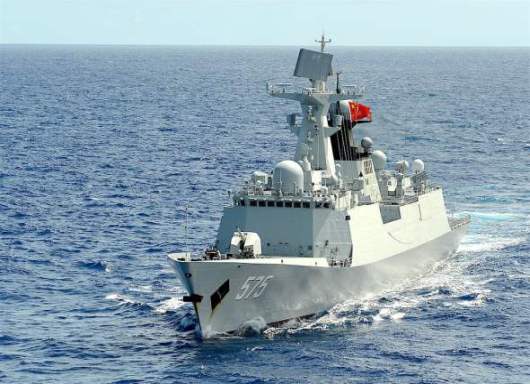China Pivots East: First Naval Exercise in the Mediterranean
China’s most advanced warships conducted its largest ever naval exercise in the Mediterranean on Monday, July 10. The missile destroyer Hefei, frigate Yuncheng and support ship Luomahu took part in Monday's live-fire drills. The warships deck guns fired several rounds at sea targets, while the crew practiced using small arms for targets at close range.
Tuesday, they were joined by China's sole operating aircraft carrier, the Liaoning.
The captain of the Hefei destroyer, Zhao Yanquan, said the operation was aimed at honing crew members’ skills in attacking small targets.” All the ships belong to the South Sea Fleet and are the best of their category, according to a military spokesman in Beijing.
The Chinese navy is the world’s second largest after the United States. Its appearance in the Mediterranean underlines Beijing’s thrust to extend its global reach. It is supported by the first Chinese overseas base, a naval logistics facility recently completed in the Horn of Africa nation of Djibouti. Tuesday, two naval ships departed from the southern Chinese port of Zhanjiang with personnel to man this facility.
The Chinese flotilla heads next to the Baltic for its "Joint Sea 2017" exercises with Russia in the waters off St. Petersburg and Kaliningrad. In September, they will continue their joint maneuver in the Sea of Japan and Okhotsk, “to improve coordination between the two navies in joint defense operations at sea.”
As DEBKA Weekly has reported, military cooperation between Moscow and Beijing is expanding. It received a major boost from Washington’s reaction to the North Korean nuclear crisis, which brought President Xi Jinping hurrying to Moscow for urgent talks with President Vladimir Putin and an opening for further cooperation.
Monday, while the Chinese navy was staging live-fire drills in the Mediterranean, the United states, India and Japan Monday began their 10-day Malabar naval exercise in the Bay of Bengal – the biggest of its kind in 25 years. It was meant as a show of force against increasingly assertive Chinese activity in their neighborhood in recent months, especially around the disputed islands in the South China Sea.
Fifteen US, Indian and Japanese vessels are taking part in Malibu. All three have sent aircraft carriers, the USS nuclear-powered Nimitz, the Indian Vikramaditya and the Japanese Izumo helicopter carrier.
The Indian Navy reports an increase in the number of Chinese warships, including submarines, entering the Indian Ocean.


